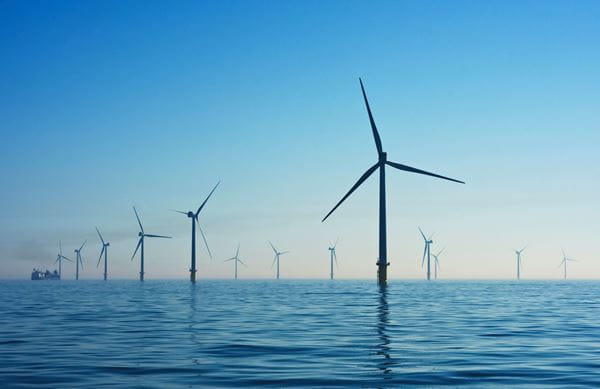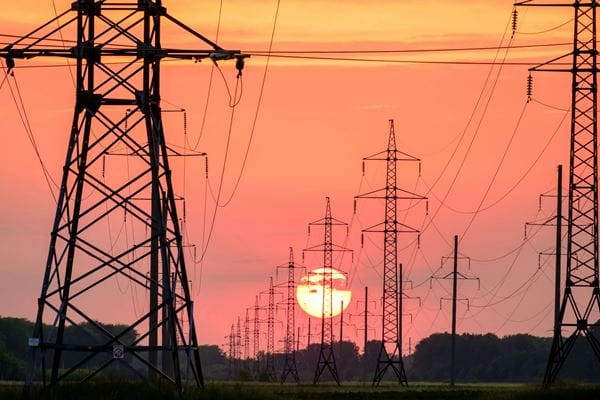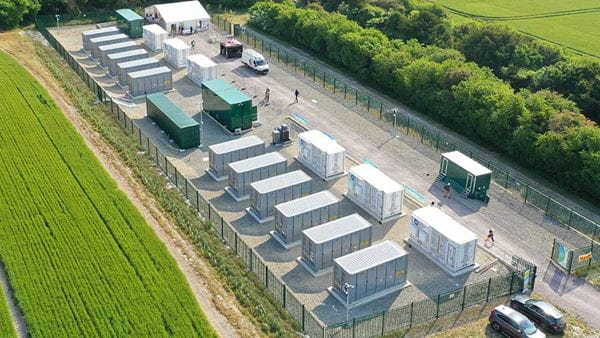Energy News – January 2024
Posted by Carter Jonas - Building Consultancy on 6th February 2024 -

Offshore wind pricing uplift for round six CfD auction
Back in September the results for the round 5 instalment of the Contracts for Difference (CFD) allocation came in, with no contracts being won for offshore wind. In this case, the Administrative Strike Price (ASP) for offshore wind was set at £44 per MWh (in 2012 prices). We estimate that £44 in 2012 is now about £60 now due to inflation. In May 2023 Ireland hosted their first offshore wind auction which appeared to be considerably more successful with 4 projects, equating to just over 3 GW of planned capacity at an average price for each project in the auction of €86.05 (£75.01) per MWh. With the Irish wind auction offering far more competitive prices, it is unsurprising that the ASP assigned by the UK government failed to draw bids from offshore wind in round 5 of the CFD allocation.
In a welcome development for the industry, the government announced in November 2023 that in the 6th round, which will take place in 2024, the offshore wind prices will be boosted by 66%. As a result, rather than the £44/MWh that was seen in CFD 5, prices in CFD 6 will be £73/MWh which is closer to those delivered in Ireland. Floating offshore ASPs are also being increased and will rise from £116/MWh to £176/MWh. The feasibility of these auctions is integral if the UK is to achieve its looming climate targets, such as achieving a 30GW capacity of offshore wind by 2030.
Sustainable energy, a key focus point of the 2023 Autumn Statement
The British government released their Autumn Statement at the end of November. Sustainable energy featured amongst the five focus points of the statement. The statement makes note of grid reforms which could increase investment temporarily by an average of £10 billion per year over the next 10 years, as well as speeding up connection times, thus enabling more net zero technologies to connect to the grid.
Jeremy Hunt also announced a £960 million Green Industries Growth Accelerator (GIGA). The government will support investment into the manufacturing of Carbon Capture Utilisation and Storage (CCUS), hydrogen, offshore wind, electricity networks, and nuclear. The aim is to grow these industries to assist with the move to net zero.
A number of announcements have been made regarding levies.
- Energy Profits Levy (EPL) – This is a temporary levy introduced in May 2022 and imposed on companies producing oil and gas within the UK or on the UK Continental Shelf, will end no later than 31 March 2028.
- Electricity Generator Levy (EGL) – This is a new investment exemption. Any new projects where the substantive decision to proceed is made on or after 22 November 2023 will be exempt from the EGL. As currently planned, the EGL will come to a close on 31 March 2028.
- Climate Change Levy (CCL) – The government will freeze main and reduced rates of the Climate Change Levy in the UK between 2025 and 2026 at the main rate of £0.00775/kWh for electricity and gas, £0.02175/kWh for liquid petroleum gas (LPG), and £0.06064/kWh for any other taxable commodity. Reduced rates will be frozen at 92% for electricity, 77% for LPG, and 89% for gas and any other taxable commodity.
How does the government intend to accelerate grid connection times?
In November the Department for Energy Security & Net Zero (DESNZ) and Ofgem put together the ‘Connections Action Plan’ (CAP) with the aim to speed up electricity connections in Britain. Presently acquiring a network connection is a lengthy process and we have seen clients receive connection dates as far away as the mid to late 2030’s. There is also approximately 500GW of capacity across transmission and distribution networks holding connection agreements and this number continues to grow.
The ambition of CAP is to drastically reduce the time taken for net zero projects to be offered transmission connection dates, from 5 years after the date requested by the customer to no more than 6 months. According to the CAP, substantial progress on these actions is needed at the latest by 2025.
For this to be achieved, the CAP lays out six areas of action for the government, Ofgem, the ESO and other network operators:
- Introduction of more entry requirements for connections. A landowner Letter of Authority is likely to be required before a transmission network application can be accepted.
- Removal of inactive projects. Milestones will start to be required and projects not meeting these milestones are at risk of being removed to release capacity for projects that are viable.
- Changing how connections are assessed. This will happen beyond existing actions. The use of flexible and non-firm connections will be enhanced.
- Changing how network capacity is assigned. It will no longer be first come first served but will instead the projects furthest down the line of progression will get connection first.
- Improvements to data and processes. This will enable customers to have a better understanding of their applications and will ensure that the network companies deliver connections on time.
- Produce longer term connection process models. To help with the net zero transition.
The DESNZ and Ofgem insist that such reforms will free up about 100GW of future transmission capacity, which is more than is currently connected.
Planning rules to be eased for solar PV rooftop and carport installations
At the end of 2023, the UK government announced a proposed expansion to permitted development rights for solar PV installations on commercial buildings and car parks. Currently, permitted development rights apply for systems under 1MW on commercial roofs, with a full planning application required for systems above this or that don't meet other design criteria.
These new changes will allow solar systems larger than 1MW to minimise planning costs further. There are also proposals to include solar car ports within permitted development legislation. More details will follow from Department for Levelling Up, Housing and Communities but this change should help to reduce project enabling costs and further drive confidence in the behind-the-meter solar market.
New planning rules to boost solar rollout and slash energy bills >
Improving Farm Productivity grants reopens and expands to include solar PV
At the end of 2023, the government announced that Improving Farm Productivity grant would open between January and March 2024 for Round 2 applications. The grants are able to pay for robotic and automated equipment and systems and/or the installation of solar PV systems.
The grant for solar PV systems has a minimum of £15,000 and maximum of £100,000 and is able to cover up to 25% of the capital cost. This means that the PV system would need to cost at least £60,000, which would be for systems of c.50kWp, covering c.250m2 (c.2,690 sqft) of roofspace. It is also worth noting that this is for projects where the installation work is yet to begin and can include battery storage.
Let the Energy Team know if we can help with any queries on this grant or solar PV feasibility and installation.
Please find out more information at the following links:
Improving Farm Productivity grant Round 2: applicant guidance >
Improving Farm Productivity grants: get ready for Round 2 >
Natural Capital and Biodiversity Net Gain (BNG) market developments
The Natural Capital Market has built up around the Environment Act 2021 (the Act) and the concepts of Nutrient and Carbon Neutrality, particularly to facilitate built development. This has resulted in the setting up of habitat banks through which corporates make investments or buy units to off-set their impacts.
The Act has created statutory planning conditions which, to be discharged, require the biodiversity impacts of the subject project to be established, showing a minimum of a 10% net gain for biodiversity. If this cannot be achieved on site, the act has created a market for the sale of biodiversity units, generated off-site that a developer can buy to meet to satisfy the condition. This will amend both the Town and Country Planning Act and the 2008 Planning act. The Act was initially due to come into effect in November of 2023 however, as of the 27th of September the government decided to delay the addition of BNG to the English planning framework until 12th of February 2024 or until the 2nd of April 2024, for small sites. Whilst BNG comes into effect for larger projects in February. Many planning authorities are demanding BNG for new planning applications regardless of the size and implementation date.
Whilst the Act sets a requirement of a minimum of a 10% net gain, a net gain plan will also require approval and the requirement maybe higher for some areas as the Local Planning Authorities can increase the net gain that must be achieved. The net gain can be calculated with the Biodiversity Metric tool which has been provided by the government.
There are mixed opinions surrounding this delay, for instance the Royal Town Planning Institute welcome the delay for they believe that ‘planners would struggle to prepare for the BNG requirements’. The Wildlife Trusts on the other hand are disappointed about the delay.
Although there have been delays regarding the introduction of this legislation, there is little doubt that it will be implemented in the near future. We have a Natural Capital team led by David Alborough with access to a network of Habitat Banks to support most forms of development.
David Alborough (Consultant)
M: 07824 590874
T: 01223751107
[email protected]
Summary of 2023’s Political Party conferences
Conservative
Energy featured in the Conservative Party Conference with the Secretaries of Energy Security and Net Zero, Business and Trade, and Environment, Food and Rural Affairs all mentioning it in their speeches. There were promises to review the strategic planning of the national grid to allow for grid connections to be established faster and to increase the capacity of the grid. Claire Coutinho, the Secretary for Energy Security and Net Zero, spoke of protecting the rural environment from more solar panels and supporting their installation on industrial and commercial buildings as well as car parks. The Secretary also promised to set out a nuclear road map to include Small Modular Reactors (SMRs). Regarding planning the Secretary promised to soften restrictions on the amount of solar that business can currently install.
Labour
Energy as a topic was a large component of the Labour Party Conference with Sir Keir Starmer referring to it in his keynote speech before he even mentioned the NHS. Labour is intending to ride the wave of Energy Transition in their bid to rebuild the country in their image and regain control of Westminster. This includes launching a new state-owned energy company called GB Energy. The purpose of GB Energy will be to rival the likes of EDF, Vattenfall and Orsted for market share and ensure that the Britain’s clean energy is produced by a British company and not by foreign investment. They intend to update the planning issues and bridge the skill gap of the current workforce to ensure that Britain can continue to expand and operate one of the cleanest and most advanced energy networks in the world. Ed Miliband, the Shadow Secretary for Energy Security and Net Zero, boldly promised to “Double onshore wind, treble solar and quadruple offshore wind.” He also assured the public that a Labour government would invest in nuclear, hydrogen and tidal power.
Liberal Democrat
After their conference the Liberal Democrats published a policy motion regarding energy which highlighted the shortcomings of the current government and proposed 5 goals. The goals included continuing the development of offshore wind in the North Sea, working with the EU to promote a sustainable supply chain for renewable energy, increasing the number of interconnectors with neighbouring nations to guarantee grid security, linking the UK Emission Trading Systems to the EU’s, and adopting the EU’s carbon border adjustment mechanism to safeguard British businesses from the competition posed by high emission product producers.
What are the premiums for battery storage?
Alex Ireton, a surveyor within the energy team provided Farmers Weekly with an article about battery storage premiums at the end of September. This article provides landowners with an insight into the money that could be made from leasing land to a battery storage developer. For more information, please view the article using the link below.
Business Clinic: What are the premiums for battery storage? >
New starters within the team
Nicholas Andrews is an Associate Partner specialising in the consenting of major Energy & Infrastructure Development Consent Orders (DCO’s)
Jamie Baxter is an Associate Partner based in the Leeds office, specialising in renewable energy technical advisory.
Sencer Aytug is an Associate Partner specialising in the funding and transaction of energy projects and assets.
Philippe Rottner is an Energy Specialist based in the London Chapel Place office.
William Griffiths is a Graduate Energy Specialist based in the Shrewsbury office.
The Landsite - The online destination for property developers and investors







